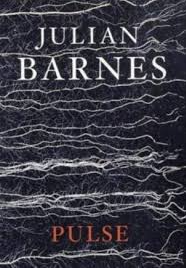Margaret Atwood's The Year of the Flood
I really enjoyed Oryx and Crake by Margaret Atwood a couple of years ago and have finally got round to reading the second book in her acclaimed MaddAddam trilogy ‘The Year of the Flood’. Set in the same universe as ‘Oryx and Crake’, ‘The Year of the Flood’ follows a lower class eco-religious cult known as the God’s Gardeners and their alternative perspective of the same apocalypse. Only two women from the community, Toby and Ren, survive the Waterless Flood, which was predicted years before by the Gardeners.
Dystopian and post-apocalyptic fiction isn't usually my cup of tea, but it feels more timely than ever right now. Looking past the strange names for characters, places, and objects in this speculative universe reveals a numerous of intriguing parallels with the world as it is today or as it may become in the future. Atwood has previously stated that any aspect of the MaddAddam trilogy's setting has the potential to become a reality depending on how current technology develops in the coming decades.
Indeed, the mention of a Wall being built to keep Tex-Mexican refugees out because a fence alone was insufficient suggests that certain aspects of Atwood's speculation may not be so far off. 'The Year of the Flood,' more of a companion novel than a chronological sequel or prequel, initially has very little character crossover with 'Oryx and Crake.' More elements from the first book, however, are gradually introduced, and it is eventually revealed how Jimmy and Glenn came to be known as Snowman and Crake, respectively.
Much of 'The Year of the Flood' focuses on Toby and Ren and how they came to join the God's Gardeners before disease wipes out the majority of the population. Their stories raise serious concerns about the effects of consumerism, natural disasters, genetic engineering, powerful corporations, and gender politics. 'The Year of the Flood,' by expanding on the themes and ideas introduced in 'Oryx and Crake,' is inevitably more sprawling and less focused than the first book in the series, and, unsurprisingly, it remains unforgivingly gloomy in the way that post-apocalyptic novels frequently are.
However, Atwood's ability to explore satirical and sinister elements in her fantasy with such intelligence and inventiveness is unparalleled. I'm looking forward to reading 'MaddAddam,' the third and final book in the series.
READ ARTICLES:




Comments
Post a Comment